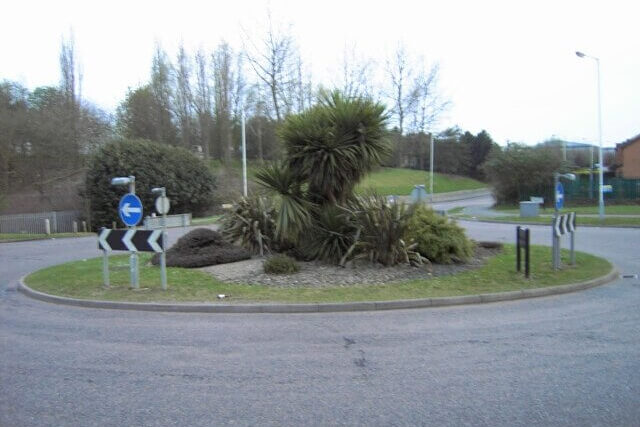
Recent research has illuminated the positive impact of these initiatives on local biodiversity, revealing that even small-scale urban greening actions can lead to a substantial increase in insect species diversity.
Urban greening initiatives have also gained recognition for their multifaceted benefits, including the mitigation of urban heat, enhancement of physical health, and improvement of mental well-being. But this new study has added another positive dimension.
Australian researchers discovered that diversifying native plant species in a single urban green space resulted in a remarkable sevenfold increase in the number of insect species present over three years. This study fills a significant knowledge gap, as there had been limited empirical evidence regarding how specific greening actions could counteract the detrimental effects of urbanisation.
Prior research primarily consisted of observational studies conducted after urban greening had occurred, with scientists analysing the outcomes retroactively. Dr. Luis Mata, the lead author of the study and a lead research scientist at Cesar Australia, highlighted this limitation. The team set out to change this by proactively implementing a greening initiative on a small 195-square-meter plot of land in Melbourne, situated next to a major road.
“It was conducted in a very densely urbanised area, completely surrounded by streets and relatively tall buildings, and with limited access to surrounding green space,” Mata said.
Even so, the team found “substantial ecological changes”, he said. “I think we found a really strong signal given the disadvantages of the site itself.”
To gauge the impact of their efforts, the researchers established a baseline by recording insect numbers the year before greening commenced. They introduced 12 native plant species to the site and subsequently conducted insect surveys over the following three years. In total, they identified 94 insect species, with 91 of them being indigenous to the Australian state of Victoria. By the study’s conclusion, they estimated that there were about 7.3 times more insect species than the initial count, even though only nine plant species remained.
Additionally, the team noted substantial increases in the number of predator and parasitoid insect species, which play a vital role in regulating populations of pest insects. This highlights the cascading benefits of fostering biodiversity within urban environments.
“These are two key groups that provide a really good ecological signal that the trophic network and all the proper interactions are happening at the site,” Mata said.
The researchers concluded that the study contributed a “critical evidence base to support future greening projects and the practice, policy and decision-making for protecting nature in urban environments”.
“I think we’re starting to see some good greening outcomes that are being captured in policy, at least in principle,” Mata said. “Providing the evidence that greening is actually working is critical.”
He hopes the study may motivate gardeners who are encouraged to plant native plants. “This could help provide the evidence that … no matter how small your intervention, you’re going to derive a good positive ecological outcome.”
“We really need to do a better job valuing small, isolated green spaces,” said Prof Dieter Hochuli of the University of Sydney, who was not involved in the study. “The size of the area being studied is what many would typically claim doesn’t really serve as great habitat for things, and isn’t contributing much to biodiversity and its management. The data in this paper show otherwise.
“It’s also a potent reminder of the importance [of] consider[ing] the quality of habitat, not just the amount of it. We often take simplistic approaches framed around planting more trees or creating more green space without considering how well it provides for species that might use it. It’s not a case of ‘any green will do’.”
Previous research in urban green spaces has also drawn connections between the presence of flowering plants and greater insect biodiversity compared to areas devoid of flowering plants. This emphasises the importance of plant choice in urban greening initiatives.
“Small-scale greening can be highly beneficial to invertebrate communities, which in time can support higher order taxa like birds,” said Dr Caragh Threlfall of Macquarie University, who was not involved in the study.
Enhancing access to green and blue spaces and incorporating biodiversity-inclusive urban planning were established as priorities during the Cop15 summit, a reflection of the growing recognition of the role urban environments play in fostering biodiversity and mitigating the impacts of urbanisation.
The findings of this research, published in the journal Ecological Solutions and Evidence, provide a compelling argument for the value of urban greening initiatives in enhancing urban biodiversity, mitigating the effects of urbanisation, and ultimately creating healthier and more sustainable cities.
——————————————————————————
At Natural World Fund, we are passionate about stopping the decline in our wildlife.
The decline in our wildlife is shocking and frightening. Without much more support, many of the animals we know and love will continue in their decline towards extinction.
When you help to restore a patch of degraded land through rewilding to forests, meadows, or wetlands, you have a massive impact on the biodiversity at a local level. You give animals a home and food that they otherwise would not have had, and it has a positive snowball effect on the food chain.
We are convinced that this is much better for the UK than growing lots of fast-growing coniferous trees, solely to remove carbon, that don’t actually help our animals to thrive.
This is why we stand for restoring nature in the UK through responsible rewilding. For us, it is the right thing to do. Let’s do what’s right for nature!
Donate today at https://naturalworldfund.com/ and join in the solution!

